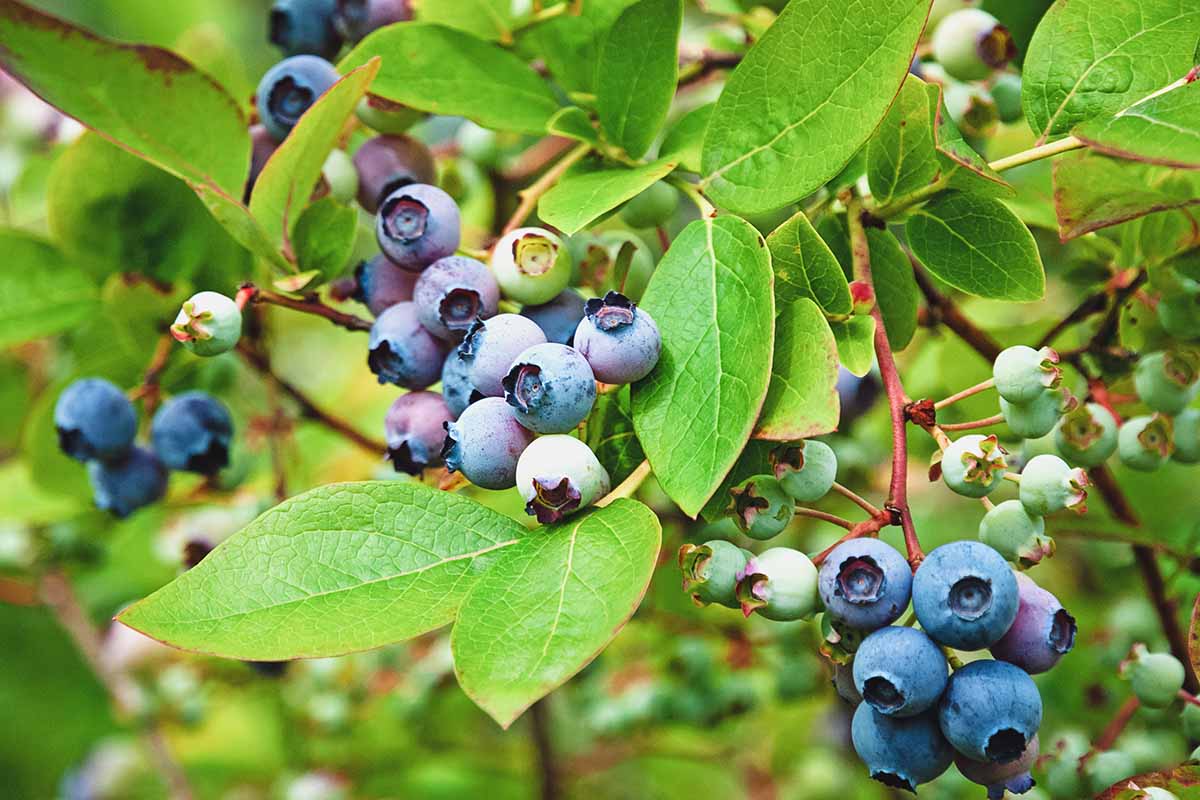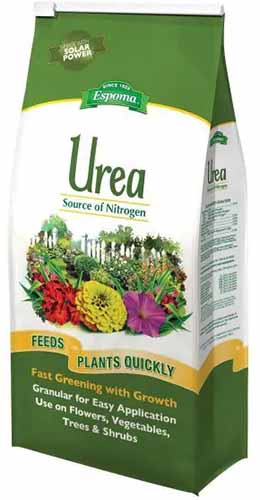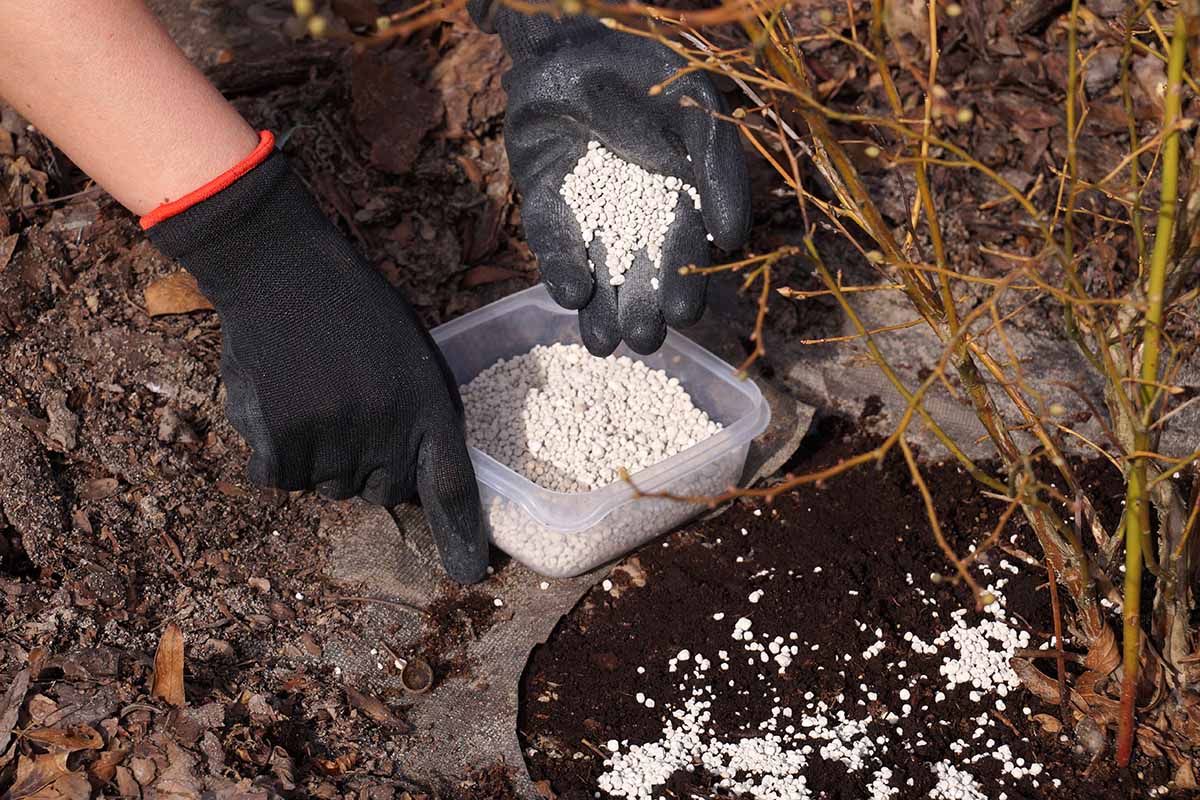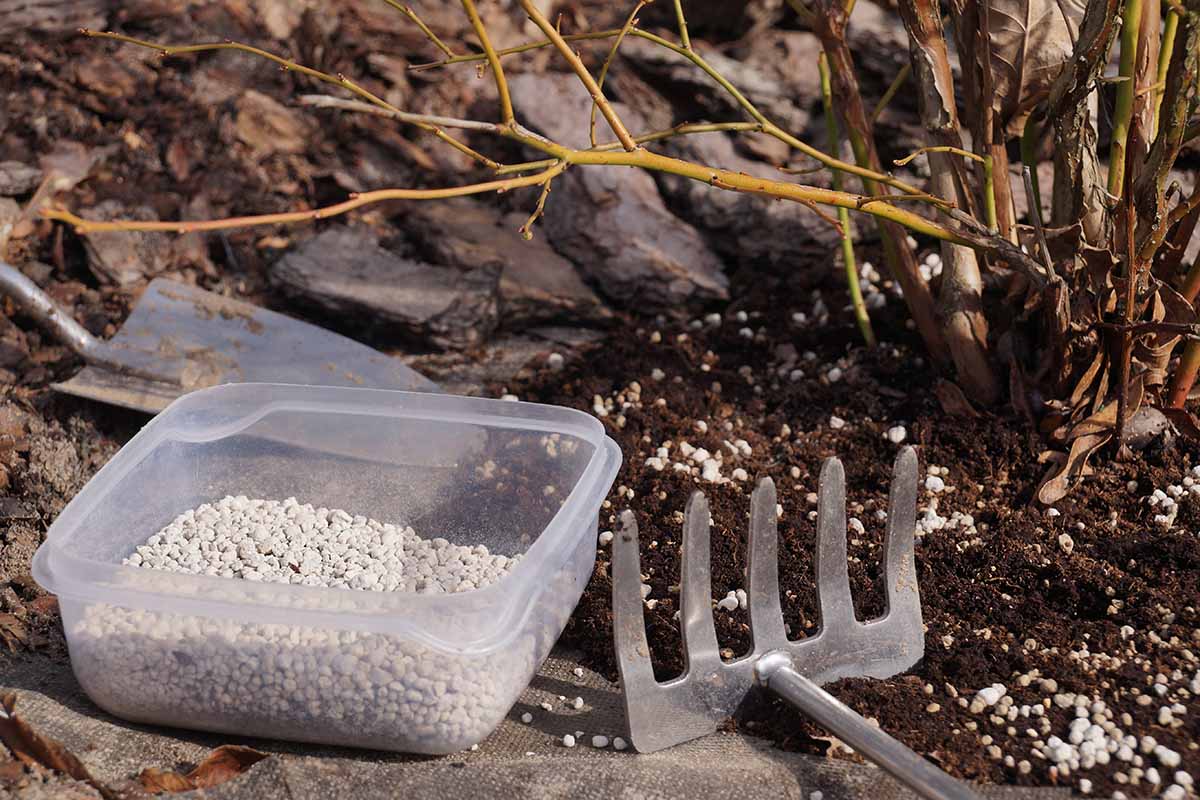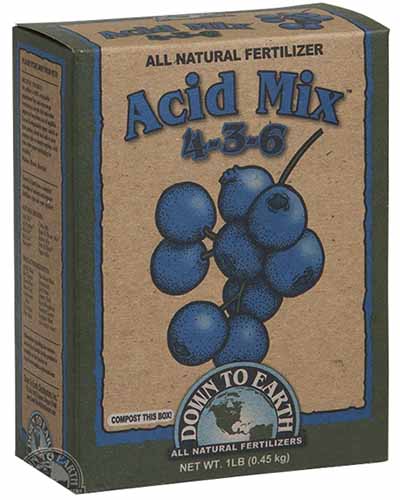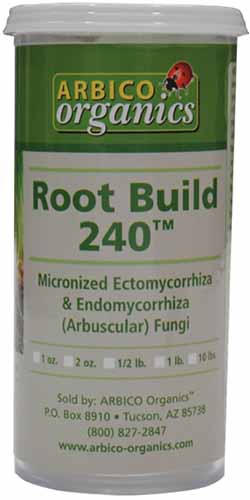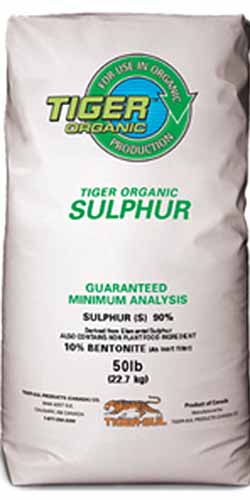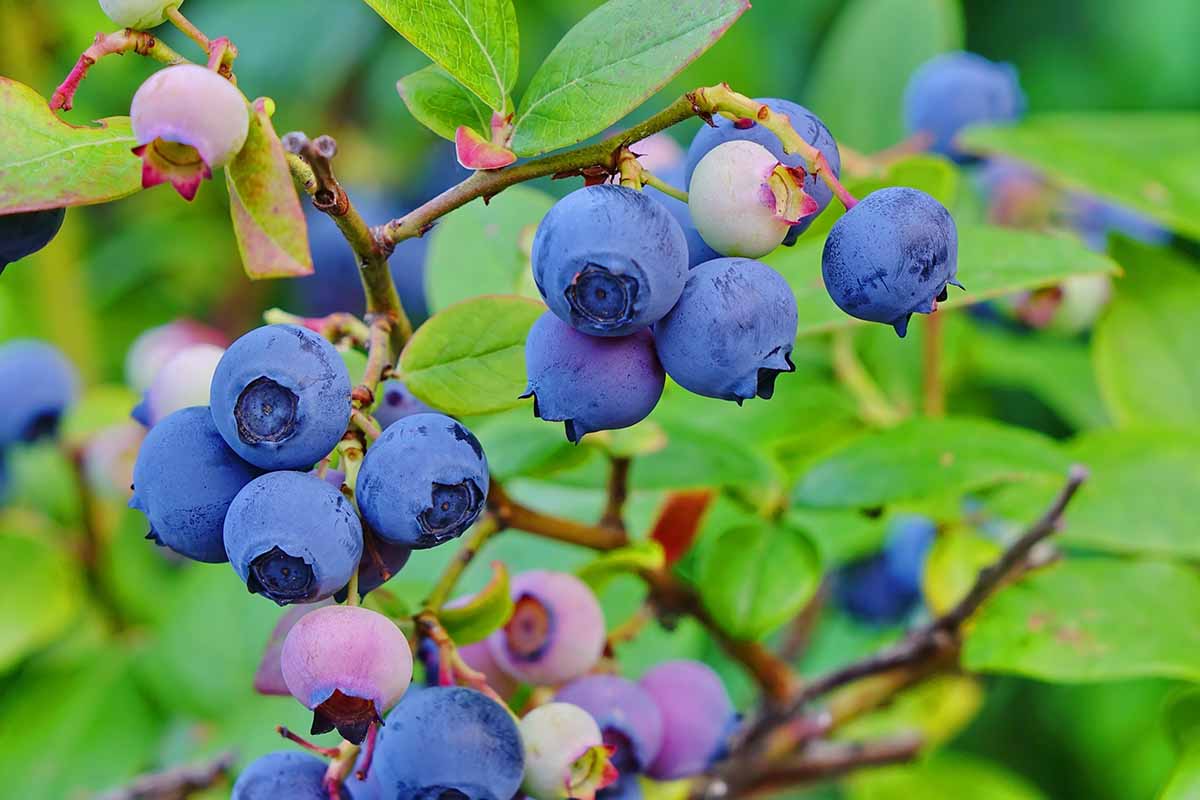If you fertilize them correctly in the spring you can expect buckets of vitamin-packed berries in the summer, between June and August. We link to vendors to help you find relevant products. If you buy from one of our links, we may earn a commission. If that sounds great to you, read on! Here’s what we’ll cover up ahead: A conventional fertilizer will have numbers on the product packing to indicate the nutritional makeup. These might say “10-10-10 (NPK),” for example. The 10-10-10 is in reference to the ratio of nitrogen (N), phosphorus (P), and potassium (K) within the mix.
Nutritional Needs
It’s very important prior to planting to test the acidity of your soil. Blueberries like to have an acidic pH between 4.0 and 5.5. Testing your planting site will also tell you if there are any nutritional deficiencies that you can work to amend. Luster Leaf Soil Test Kit It will test your soil for nitrogen, phosphorus, potassium, and pH. Read more about testing your garden soil in our guide. In the wild, blueberries generally grow in moist, swampy, acidic areas. So it makes sense that products that promote acidity will keep your plants happy. Nitrogen helps plants grow large and robust. Phosphorus encourages root growth, blooming and fruiting, while potassium promotes disease resistance and overall vigor. If the results of your soil test reveal that it’s lacking nitrogen, you’ll want to amend it with ammoniacal nitrogen fertilizers – these include sulfur-coated urea, magnesium chloride, and ammonium sulfate. Blueberries are very sensitive to salt, so you might need to flush the soil with water between fertilizing to avoid buildup near the root system. This is especially important if you are growing your blueberries in containers. If you need to add nitrogen to your soil, you should avoid any product that contains nitrates. Nitrates will negatively impact all types of blueberries, particularly young specimens that have yet to become established. Espoma Urea Plant Food is a high-nitrogen soil amendment made without nitrates that you can purchase from Nature Hills Nursery. Espoma Urea Plant Food While such a high amount of nitrogen would usually impact fruit production, urea nitrogen converts to ammonium in the soil and has an acidifying effect. It will provide a proper amount of nitrogen for your blueberry bush while also helping the roots absorb vital nutrients they previously lacked access to. Only use urea prior to transplanting or on plants that are over two years old and well established. The effects of a fertilization regime will vary based on the age of specimens, planting site, and whether the plant is a highbush, lowbush, or rabbiteye variety. Drainage, soil type, and climate all play a role in how fertilization affects your plants.
When to Fertilize
At a minimum, you should be fertilizing once a year. In general, blueberry bushes respond best if fed in one to two applications. The second application is only needed for new plants under two years old. The first application in early spring, around early March or April, is the most important to your summer harvest. The timing will depend on which USDA Hardiness Zone you’re in and the variety you are growing. Look for the moment that new leaf and stem growth are just beginning to come in for the spring season and before buds form. Fertilizing at this time gives your plant plenty of time to fully absorb the nutrients. If your blueberry bush is less than two years old, you’ll need to make another application six to eight weeks later in late spring, around the end of May. Mature specimens don’t need this second application, so if you’re growing an older plant, you can skip this step.
Types of Fertilizer
There are a few main types of fertilizer we’ll focus on. Generally, you’ll want to choose products meant for plants that are ericaceous, or acid-loving, like cranberries, azaleas, or camellias.
Liquid
Blueberries absorb nutrients through their shallow root system, so if you’re watering through a drip line, a liquid fertilizer incorporated into your irrigation system will work. This is referred to as fertigation. Drip lines are a very popular way to water plants that need moisture on either a consistent or timed basis. Usually, when a drip line is installed, the feeder roots will have the highest density directly under the drip line. Blueberries are sensitive to water-soluble fertilizers, so getting the ratios right is important. Excessive amounts of nutrients provided in this form may cause damage or death. When using water-soluble products, you will need to apply weekly in small amounts through the beginning of the growing season and ending during harvest time. When applying through your drip line, don’t move it unless it is placed right next to the base of the bush. Fertilizing too close to the base will not help the roots absorb the nutrients. Make sure nothing splashes up onto the foliage, as this can potentially burn the plant and cause damage. If you lack a drip line, you can still incorporate liquid food into your watering program at maximum once a week. Specific mix rates will depend on the age of the plant, whether the type you are growing is a highbush or lowbush, along with some accompanying math. Here is a helpful chart, provided by the University of Georgia, for liquid fertilization rates.
Granular
For nitrogen, well-rotted animal manure, blood meal, or worm castings can be used to encourage plant growth. A granular fertilizer, such as Fertilome 9-15-13 NPK azalea and camellia mix available from Nature Hills Nursery, can be applied using a quarter-cup for each foot of height. Fertilome Azalea, Camellia, and Rhododendron Food Loosen the soil directly around the bush with a garden rake. Be gentle, as the roots are shallow and can be damaged if you rake too aggressively. Sprinkle your granules of choice uniformly around your plant, up to 12 inches outward from the base. Follow the instructions on the product label for the amount of fertilizer you need. Never apply directly at the base of the plant, as this will discourage the development of a healthy root system. Gently work the granules into the soil with your garden rake, then water deeply to make the nutrients available to your plant.
Natural
If using natural nutrients is more your style, there are a few different options available. You can find natural nutrient mixes that will work for your blueberry bushes, and I recommend this Down to Earth Acid Mix 4-3-6 (NPK) from Arbico Organics. Down to Earth Acid Mix This mix can be used for all acid-loving plants, like azaleas, hydrangeas, raspberries, and camellias. Check the product packaging for specific application rates. To provide acidity, some gardeners recommend using spent coffee grounds or sphagnum peat moss to decrease the pH of the soil. Blood meal and animal manure have such high nitrogen levels that you’ll need to mix them with compost first in order to avoid burning the shallow roots of your plants. Phosphorus and potassium encourage blooming, fruiting, and disease resistance. These nutrients occur naturally in bone meal and powdered or liquid seaweed.
Soil Amendments
Soil is the foundation for healthy root growth, and therefore plant health. Here are some recommended amendments you might want to try to improve your harvest.
Mycorrhizal Fungi
Mycorrhizae live and work symbiotically to improve your plant’s overall health. Beneficial fungi can improve your plant’s root system, increase nutrient and water absorption, and prevent disease. There are many benefits to inoculating your soil with beneficial microbes that we dig into in this guide. Root Build 240 A general mycorrhizae blend, like Root Build 240 from Arbico Organics, will work to sustainably support your plant’s health going into the growing season.
Soil Acidifier
If your planting area isn’t naturally acidic, you will need to amend it with an acidifier. If possible, look for an acidifier that will have a long-term effect on your soil. It’s still recommended that you acidify your soil annually, but if you select a product that breaks down slowly, you’ll be in a better place the following year. This organic sulfur amendment available from Arbico Organics will both acidify your soil and remediate the salt levels around your plant. Tiger Organic Sulfur It’s a time-release amendment and comes in a 50-pound bag. To apply, select a warmer day in the early spring, as the temperature helps bacteria decompose the sulfur. The ideal temperature range is between 70 and 80°F. Follow the directions on the product packaging for specific ratios of acidifier to soil volume. It doesn’t take much – one 50-pound bag will cover 10,000 square feet of garden space.
Boost those Berries!
When done right, fertilizing your blueberries can almost guarantee a happy and healthy plant. These plants prefer acidic soil, so you should use fertilizers that lower pH, while also avoiding any nitrogen mixes that include nitrates. In general, you’ll want to fertilize your blueberries at least once a year in the early spring before leaf growth really gets going. If your plant is under two years old, make another application six to eight weeks later around the end of May. I’d love to hear your tips and tricks for fertilizing in the comments below! And for more information about growing blueberries, check out these guides next:
How to Transplant Blueberry BushesHow to Protect Blueberries from BirdsTop 10 Blueberry Varieties to Grow for Home Harvests


